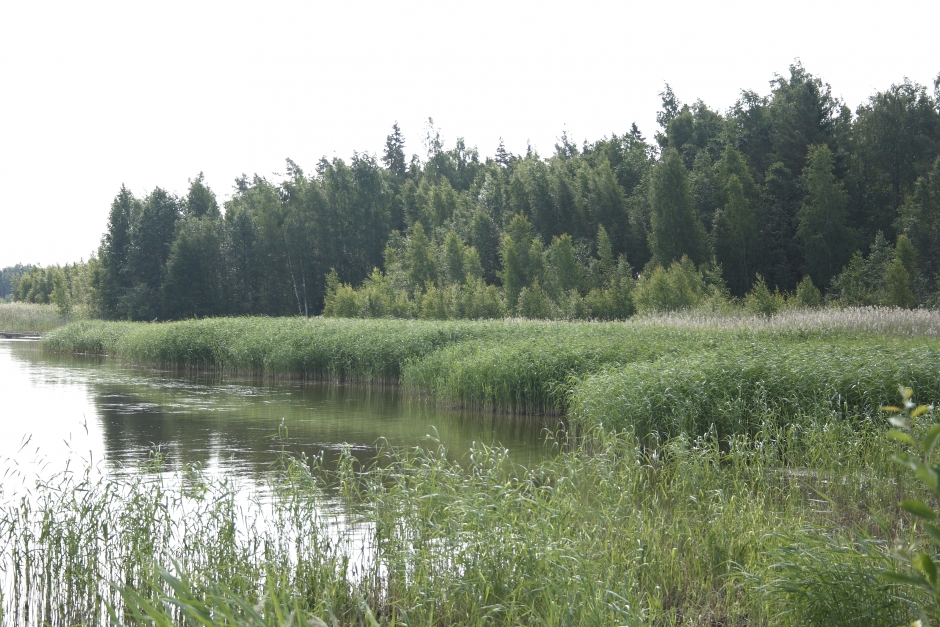Reed beds

Reed is the tallest species of grass in the Nordic countries and spread very rapidly due to shoots from stolons. The species usually ends up completely dominating the shore area and few other plant species survive the fierce competition. It can grow both in damp ground as well as in standing water as deep as 2,5 meters and is a characteristic species for nutritious water bodies. Withering reed forms a decomposing layer, thus contributing to the land uplift phenomenon. Reed beds also accelerate land uplift by slowing down sediment particles, which then fall to the bottom. For the same reason, reed beds can be vital in improving water quality as inland water is purified when flowing through the reed.
Reed was previously used in many different ways and was one of the most important grasses. It can be used as roofing material or carpeting and the seed heads were used to stuff pillows and mattresses. The seed heads can also be used in coloring yarn and the root can be dried and ground to flour.
Many people dislike the reed as it is difficult to control as it spreads. However, vast reed beds tracing the shoreline are important habitats for many bird species. Reed bunting, sedge warbler and Eurasian reed warbler nest in reed beds and many other species use them as staging areas during migration. The largest reed beds in Vaasa can be found in the innermost parts of the Eteläinen kaupunginselkä-bay and birdlife can be observed from two observation towers from early spring to autumn migration.
